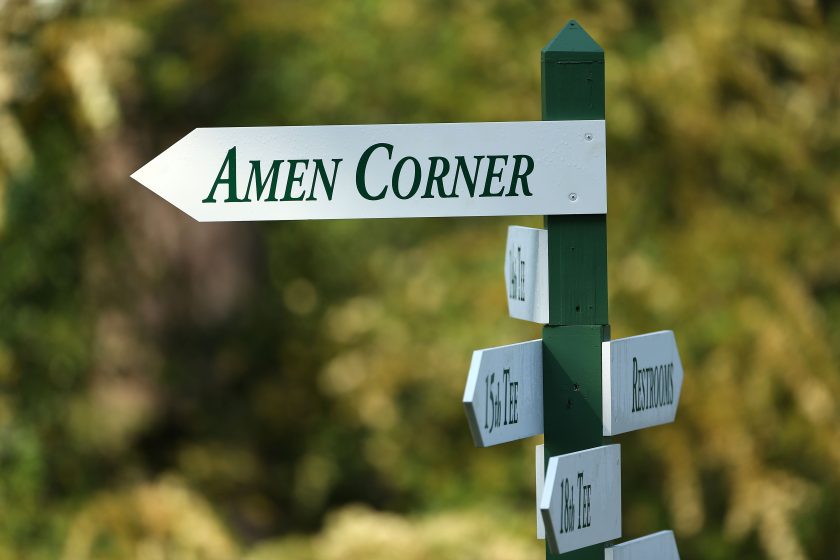The birds are chirping. The sun is shining. The temperature is a crisp 68-degrees. The flowers are blooming. The grass is cut. Jim Nantz's delicately narrates the B-Roll of Augusta National Golf Club.
Videos by FanBuzz
Nantz highlights the entire golf course, but takes a moment to focus on holes 11, 12 and 13.
The treacherous three-hole stretch holds a special place in the world of golf because it can make or break a player's round at The Masters Tournament. In fact, golfers are wise to say a little prayer before teeing off on 11 and wait until they finish on 13 to let out an amen.
So, what is it about this trio of holes that makes it so fearsome? And how did it get its name?
Amen Corner: A History
Technically, Amen Corner is the second shot on 11, all of 12 and the first two shots of 13, but for simplicity sake, we're going to say it's the entirety of the three holes. The official ruling evades me because this is the point in the round where I'm floating in and out of my nap.
Anyway, let's start off by taking a look at each hole individually.
11th Hole: White Dogwood
Hole 11 is a 505-yard par 4. The length is hazard number one, but what makes White Dogwood tricky is the approach to the green. The dance floor is guarded by a pond on the left-side and a small bunker and tree on the right. Behind the green sits Rae Creek, which I propose should be Amen's Creek because it connects the three Amen Corner holes. Most players hope to make it out with a par, but big hitters like Brooks Koepka and Bryson DeChambeau can be gutsy and try to get on in two.
12th Hole: Golden Bell
RELATED: The Eisenhower Tree: A Presidential Pain for Ike's Golf Game
Perhaps golf's most famous hole, the 155-yard par 3 has been the downfall of many players' quest for the green jacket. Jordan Spieth epically collapsed in 2016 when he hit two balls in Rae Creek and quadruple bogeyed to squander his commanding lead. Francesco Molinari similarly lost his lead in 2019 when he hit it short and the ball rolled into the water. His misstep allowed Tiger Woods to surge and win his fifth Masters title.
In addition to the water, Golden Bell is guarded by three bunkers and has a steep slope that leads into the water at the front of the green. The epitome of brutality.
Players make their way to the 12th green via the iconic Ben Hogan bridge.
13th Hole: Azalea
While White Dogwood and Golden Bell are torturous, Azalea is a prime opportunity for birdies. The 510-yard par 5 is a dogleg left with plenty of room to make moves until the approach shot. The green is protected by Rae Creek in the front and four small bunkers surround the other sides.
The famous Byron Nelson Bridge takes players from the 13th tee box to the fairway.
There's Amen Corner for you. Just how did it get its name, though? Well, we owe it to a jazz song.
How Did Amen Corner Get Its Name?
Sports Illustrated writer Herbert Warren Wind coined "Amen Corner" when covering the 1958 Masters:
"At the farthest reach of the Augusta National course — down in the Amen Corner where Rae's Creek intersects the 13th fairway near the tee, then parallels the front edge of the green on the short 12th and finally swirls alongside the 11th green."
Wind initially said the name was inspired by the song "Shouting at Amen Corner," by Mezz Mezzrow, but he mixed up the artists and name. Turns out it was actually the 1933 song "Shoutin' in that Amen Corner" by Mildred Bailey and the Dorsey Brothers Orchestra.
Amen Corner is iconic in golf history. If a player messes up on one of these three holes, it can be their downfall. If they can get through it unscathed, they breathe a sigh of relief. It's the toughest test for golf's toughest and most coveted prize.

